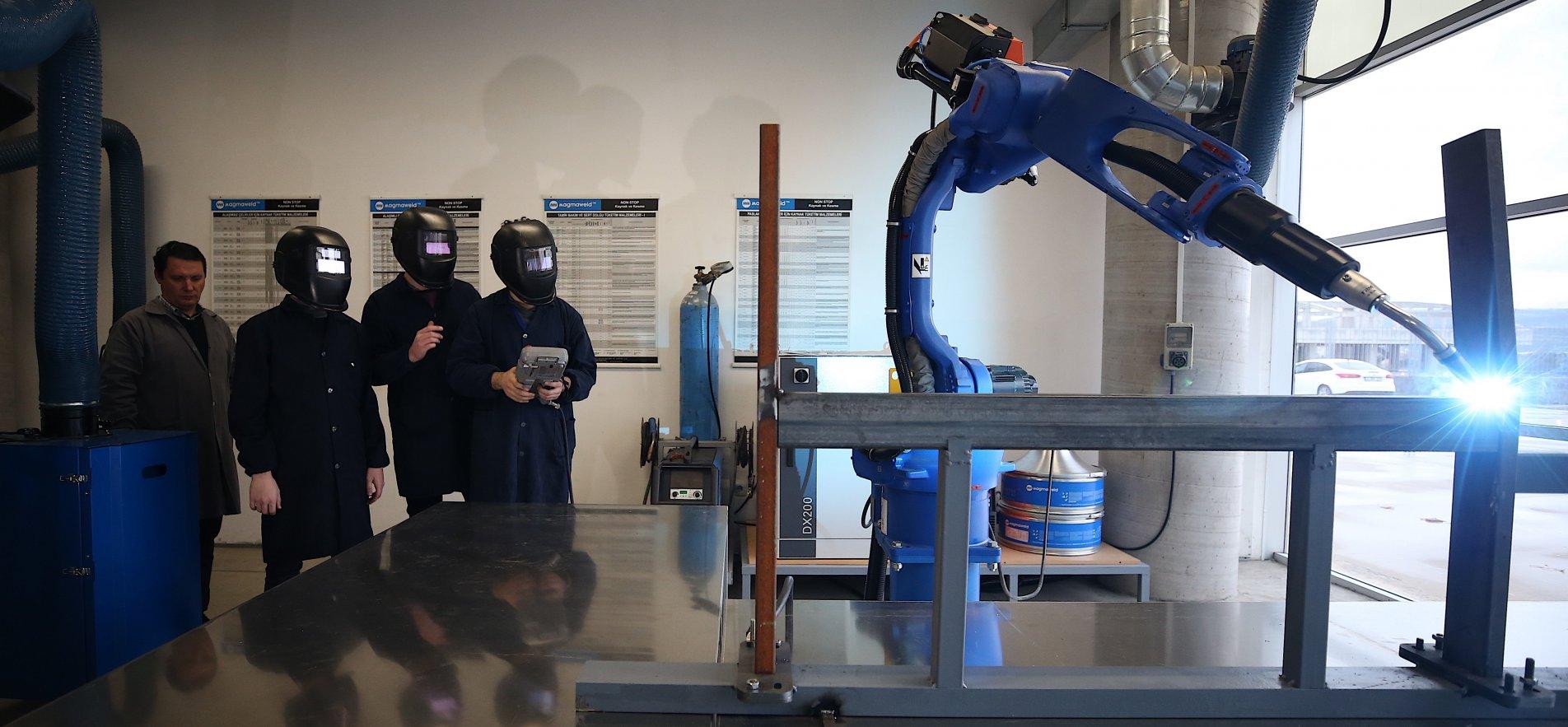ADAPTING VOCATIONAL TRANING TO THE 21ST CENTURY
"Deputy Minister of National Education Mahmut Özer wrote an article about transformation of vocational education as a guest writer"Deputy Minister of National Education Mahmut Özer wrote:
"Spread of automation and artificial intelligence technologies today has caused a serious transformation in both national and global business markets. Big data analytics and cloud technologies are widely used in different sectors. These transformations changes human force and machine power participation in the business market against the human labor force. For example, the World Economic Forum report showed that 71 percent of total work hours in 12 different industrial sectors in 2018 were done by man and it is predicted that this figure will decrease to 58 percent in 2022 (World Economic Forum, The Future of Jobs Report 2018).
It is also predicted that this transformation may form new professions and new employment areas. For example, the World Economic Forum's The Future of Jobs Report, there will be 10 percent shrinkage in the total employment due to vanished professions while there will be 11 percent growth with the emergence of new professions. This prediction underlined that 0.98 million jobs will vanish into a thin air while 1.74 million new job vacancies will be created and there will be a rise in the number of new employment opportunities and positions. The report mentioned transformation in the employment capacity of global scale firms. It said that machines will fill 75 million jobs while 133 new employment positions will be created. Transformation trend in the job positions will urge transformation in the basic skills required for employment. The same report stated that approximately 58 percent of basic skills required for employment will remain the same between 2018 and 2022 while 42 percent of them will change during the same time interval; it also underlined that prioritizing skills such as analytical thinking, innovation, entrepreneurship, critical thinking, negotiation, flexibility and ability to solve complex problems. On the other hand, business markets of countries are no longer static. Especially multinational companiess are carrying their production places to different countries. There are two factors in the geographical preference for production; human resources with suitable skills (74 percent) and low labor force costs (64 percent). (World Economic Forum, The Future of Jobs Report 2018).
Transformation in the business market will have a direct impact on vocational training.
All these transformations are not expected to happen suddenly from today to tomorrow. (OECD Employment Outlook 2019: The Future of Work). Some positions in some business area or areas will be transferred to machines from human force but countries should focus on how they can fill new profession positions that will emerge during this transformation or how they can teach people to gain new additional skills that will be required for these positions. In other words, countries should work in an effort to teach new skills to people in order to support long term employment and reduce the harms of such transformation. This fundamental and rapid transformation in the business market will naturally have a direct impact on vocational training. One of the basic problems that all countries will face about vocational training is how to adapt vocational training to this transformation in the business market and respond to rapidly changing sets of skills. Rapid transformation in the technology directly effects production and service sectors and urges redefinition of existing professions and cause constant changes in the skills and abilities expected from professionals. The question is how vocational training with its relatively static structure will keep up with this transformation.
Countries should try to produce solution in order to adapt their vocational training system to this transformation. When we consider that this transformation will cause constant change in the professions and skill definitions, it can be seen that the transformation will be constant. The question will be how active participation of stakeholders must be in curriculum and skill updates for healthy transformation and will this participation slow down the pace of transformation.
Transformation in the vocational training must prioritize offering more basic and generic skills that will make the adaptation of graduates to the rapid transformation in the business market easier. This approach will maintain transformation of training in fair and manageable level. Actually, signals of this transformation can be seen recently in the related international conflicts. Main point of this conflict is based on the question if the vocational training must be original and detailed for certain professions or must focus on general skills and academic and basic skill lessons that will make the adaptation of graduates to rapidly changing conditions.
Vocational training decreases young unemployment figures
It is known that original and detailed vocation training makes transition from school to work easier and decreases young unemployment. However, recent studies reveal that graduates of vocational high schools are suffering from long term employment problems despite this advantage. Due to the low number of job opportunities in the business market and low mobility, graduates of these schools are employed in the jobs requiring lower skills and that does not have any relationship with the education they receive. When we adapt vocational training to business skills, graduates may face the risk to lose their jobs when they cannot adapt to the new conditions or when they cannot learn the skills required due to transformation in the business market in the long run if we do not offer enough academic classes. Consequently, when we consider the advantages and disadvantages of both vocational training approaches with the ongoing transformation in the business market, it seems fair to adapt vocational training that allows transfer between professions and focuses on teaching basic and generic skills. It is seen that Continental Europe which has well established vocational training systems has adapted this kind of transformation. Actually, this transformation will allow breaking the thick wall between traditional high schools and vocational high schools as it will decrease the difference between the curriculums of these two types of high schools.
The new approach that makes adaptation to the business market easier will give more time to academic, basic and generic skills to develop and will increase long term employment opportunities as well as allow graduates to have higher chance to enroll in higher education institutes. When expectations of the business market reaches a level that can be fulfilled with higher school institute graduates, this new approach can produce solutions to this risky situation for vocational school graduates.
There are 47 fields and 109 branches in vocational training
The Ministry of National Education has been monitoring these transformations closely and has been consulting with stakeholders all the time in order to update weekly lesson schedules and fields and branches of the vocational training. Within this framework, first amendment was to update vocational training fields and branches according to changing skill sets. Vocational training in 47 fields and 203 branches were changed into 47 fields and 109 branches as a result of update efforts. On the other hand, number of academic classes in vocational training was increased and 31 hours of lessons were included to the weekly academic schedule in vocational and technical Anatolian High Schools. Differences in the class programs of vocational and technical Anatolian High Schools are eliminated on the first three years of high school and allowed students to transfer to either of two programs. A special attention was paid for digital skills during the transformation in an effort to allow students to attain these skills before graduation. The new vocational training program will be implemented in 2020-2021 academic year. When we take a general view at the mentioned updated curriculum, you can see that we have formed a vocational training program based on broad based, transferable basic professional skills, allowing students to gain skills in more than one field and increase employment opportunity for graduates. Moreover, due to increased number of academic classes, graduates of vocational high schools will be more successful in the accession to universities. This new vocational training will make bounds with the business world and higher education institutes more powerful."



















